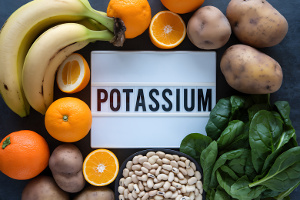afterLoad (456.53KB) (1.75ms)
afterInitialise (1.28MB) (25.62ms)
afterRoute (930.32KB) (8.51ms)
beforeRenderComponent com_content (22.94KB) (363μs)
Before Access::preloadComponents (all components) (35.84KB) (333μs)
After Access::preloadComponents (all components) (97.34KB) (695μs)
Before Access::preloadPermissions (com_content) (1.6KB) (16μs)
After Access::preloadPermissions (com_content) (3.29MB) (5.54ms)
Before Access::getAssetRules (id:9113 name:com_content.article.4915) (130.65KB) (104μs)
After Access::getAssetRules (id:9113 name:com_content.article.4915) (7.38KB) (53μs)
beforeRenderRawModule mod_tags_similar (TIP! See also the related articles) (1.32MB) (18.73ms)
afterRenderRawModule mod_tags_similar (TIP! See also the related articles) (585.45KB) (12.3ms)
beforeRenderModule mod_tags_similar (TIP! See also the related articles) (752B) (7μs)
afterRenderModule mod_tags_similar (TIP! See also the related articles) (6.93KB) (114μs)
beforeRenderRawModule mod_custom (Search for more information... ) (2.93KB) (34μs)
afterRenderRawModule mod_custom (Search for more information... ) (4.23KB) (264μs)
beforeRenderModule mod_custom (Search for more information... ) (736B) (3μs)
afterRenderModule mod_custom (Search for more information... ) (4.32KB) (34μs)
afterRenderComponent com_content (41.22KB) (11.86ms)
Before Access::getAssetRules (id:8 name:com_content) (49.95KB) (1.92ms)
After Access::getAssetRules (id:8 name:com_content) (6.17KB) (29μs)
afterDispatch (43.66KB) (1.08ms)
beforeRenderRawModule mod_articles_category (READ MORE...) (32.3KB) (426μs)
afterRenderRawModule mod_articles_category (READ MORE...) (89.14KB) (35.23ms)
beforeRenderRawModule mod_tags_popular (Search) (4.81KB) (25μs)
afterRenderRawModule mod_tags_popular (Search) (6.78KB) (20.97ms)
beforeRenderRawModule mod_custom (BOOST YOUR IMMUNE DEFENSE) (960B) (24μs)
afterRenderRawModule mod_custom (BOOST YOUR IMMUNE DEFENSE) (912B) (54μs)
beforeRenderRawModule mod_articles_category (Get additionel and more detailed knowledge about) (8.41KB) (23μs)
afterRenderRawModule mod_articles_category (Get additionel and more detailed knowledge about) (44.42KB) (2.55ms)
beforeRenderRawModule mod_custom (Antiaging) (6.97KB) (25μs)
afterRenderRawModule mod_custom (Antiaging) (1KB) (39μs)
beforeRenderRawModule mod_custom (Exercise) (720B) (11μs)
afterRenderRawModule mod_custom (Exercise) (2.27KB) (23μs)
beforeRenderModule mod_articles_category (READ MORE...) (276.63KB) (2.15ms)
afterRenderModule mod_articles_category (READ MORE...) (1.25KB) (91μs)
beforeRenderModule mod_tags_popular (Search) (5.17KB) (16μs)
afterRenderModule mod_tags_popular (Search) (1.27KB) (26μs)
beforeRenderModule mod_custom (BOOST YOUR IMMUNE DEFENSE) (1.31KB) (11μs)
afterRenderModule mod_custom (BOOST YOUR IMMUNE DEFENSE) (1.28KB) (30μs)
beforeRenderModule mod_articles_category (Get additionel and more detailed knowledge about) (8.03KB) (17μs)
afterRenderModule mod_articles_category (Get additionel and more detailed knowledge about) (1.31KB) (22μs)
beforeRenderModule mod_custom (Antiaging) (7.33KB) (10μs)
afterRenderModule mod_custom (Antiaging) (1.27KB) (21μs)
beforeRenderModule mod_custom (Exercise) (336B) (9μs)
afterRenderModule mod_custom (Exercise) (1.25KB) (20μs)
beforeRenderRawModule mod_menu (Main menu-US) (22.38KB) (416μs)
afterRenderRawModule mod_menu (Main menu-US) (156.98KB) (1.34ms)
beforeRenderModule mod_menu (Main menu-US) (720B) (4μs)
afterRenderModule mod_menu (Main menu-US) (4.61KB) (52μs)
beforeRenderRawModule mod_languages (Sprogskift) (3.69KB) (38μs)
afterRenderRawModule mod_languages (Sprogskift) (88.52KB) (1.41ms)
beforeRenderModule mod_languages (Sprogskift) (720B) (5μs)
afterRenderModule mod_languages (Sprogskift) (5.31KB) (21μs)
beforeRenderRawModule mod_finder () (6.34KB) (11μs)
afterRenderRawModule mod_finder () (150.16KB) (2.04ms)
beforeRenderModule mod_finder () (704B) (5μs)
afterRenderModule mod_finder () (3.29KB) (33μs)
beforeRenderRawModule mod_custom () (6.62KB) (157μs)
afterRenderRawModule mod_custom () (21.95KB) (842μs)
beforeRenderModule mod_custom () (704B) (7μs)
afterRenderModule mod_custom () (1.23KB) (49μs)
beforeRenderRawModule mod_menu (Main menu-US) (5.07KB) (112μs)
afterRenderRawModule mod_menu (Main menu-US) (6.02KB) (652μs)
beforeRenderModule mod_menu (Main menu-US) (720B) (3μs)
afterRenderModule mod_menu (Main menu-US) (3.75KB) (41μs)
beforeRenderRawModule mod_languages (Sprogskift Mobil) (912B) (15μs)
afterRenderRawModule mod_languages (Sprogskift Mobil) (3.89KB) (765μs)
beforeRenderModule mod_languages (Sprogskift Mobil) (720B) (5μs)
afterRenderModule mod_languages (Sprogskift Mobil) (1.27KB) (32μs)
beforeRenderRawModule mod_finder () (2.3KB) (10μs)
afterRenderRawModule mod_finder () (6.29KB) (568μs)
beforeRenderModule mod_finder () (704B) (4μs)
afterRenderModule mod_finder () (1.23KB) (42μs)
beforeRenderRawModule mod_custom () (8.66KB) (178μs)
afterRenderRawModule mod_custom () (944B) (140μs)
beforeRenderModule mod_custom () (704B) (3μs)
afterRenderModule mod_custom () (2.43KB) (26μs)
beforeRenderRawModule mod_custom () (688B) (81μs)
afterRenderRawModule mod_custom () (896B) (91μs)
beforeRenderModule mod_custom () (704B) (3μs)
afterRenderModule mod_custom () (2.71KB) (21μs)
afterRender (160.1KB) (2.6ms)
| 1 x afterRenderRawModule mod_articles_category (READ MORE...) (89.14KB) (21.46%) | 35.23ms |
| 1 x afterInitialise (1.28MB) (15.61%) | 25.62ms |
| 1 x afterRenderRawModule mod_tags_popular (Search) (6.78KB) (12.77%) | 20.97ms |
| 1 x beforeRenderRawModule mod_tags_similar (TIP! See also the related articles) (1.32MB) (11.41%) | 18.73ms |
| 1 x afterRenderRawModule mod_tags_similar (TIP! See also the related articles) (585.45KB) (7.49%) | 12.30ms |
| 1 x afterRenderComponent com_content (41.22KB) (7.23%) | 11.86ms |
| 1 x afterRoute (930.32KB) (5.18%) | 8.51ms |
| 1 x After Access::preloadPermissions (com_content) (3.29MB) (3.38%) | 5.54ms |
| 1 x afterRender (160.1KB) (1.58%) | 2.60ms |
| 1 x afterRenderRawModule mod_articles_category (Get additionel and more detailed knowledge about) (44.42KB) (1.55%) | 2.55ms |
| 1 x beforeRenderModule mod_articles_category (READ MORE...) (276.63KB) (1.31%) | 2.15ms |
| 1 x afterRenderRawModule mod_finder () (150.16KB) (1.24%) | 2.04ms |
| 1 x Before Access::getAssetRules (id:8 name:com_content) (49.95KB) (1.17%) | 1.92ms |
| 1 x afterLoad (456.53KB) (1.07%) | 1.75ms |
| 1 x afterRenderRawModule mod_languages (Sprogskift) (88.52KB) (0.86%) | 1.41ms |
| 1 x afterRenderRawModule mod_menu (Main menu-US) (156.98KB) (0.81%) | 1.34ms |
| 1 x afterDispatch (43.66KB) (0.65%) | 1.08ms |
| 1 x afterRenderRawModule mod_custom () (21.95KB) (0.51%) | 842μs |
| 1 x afterRenderRawModule mod_languages (Sprogskift Mobil) (3.89KB) (0.47%) | 765μs |
| 1 x After Access::preloadComponents (all components) (97.34KB) (0.42%) | 695μs |
| 1 x afterRenderRawModule mod_menu (Main menu-US) (6.02KB) (0.4%) | 652μs |
| 1 x afterRenderRawModule mod_finder () (6.29KB) (0.35%) | 568μs |
| 1 x beforeRenderRawModule mod_articles_category (READ MORE...) (32.3KB) (0.26%) | 426μs |
| 1 x beforeRenderRawModule mod_menu (Main menu-US) (22.38KB) (0.25%) | 416μs |
| 1 x beforeRenderComponent com_content (22.94KB) (0.22%) | 363μs |
| 1 x Before Access::preloadComponents (all components) (35.84KB) (0.2%) | 333μs |
| 1 x afterRenderRawModule mod_custom (Search for more information... ) (4.23KB) (0.16%) | 264μs |
| 1 x beforeRenderRawModule mod_custom () (8.66KB) (0.11%) | 178μs |
| 1 x beforeRenderRawModule mod_custom () (6.62KB) (0.1%) | 157μs |
| 1 x afterRenderRawModule mod_custom () (944B) (0.09%) | 140μs |
| 1 x afterRenderModule mod_tags_similar (TIP! See also the related articles) (6.93KB) (0.07%) | 114μs |
| 1 x beforeRenderRawModule mod_menu (Main menu-US) (5.07KB) (0.07%) | 112μs |
| 1 x Before Access::getAssetRules (id:9113 name:com_content.article.4915) (130.65KB) (0.06%) | 104μs |
| 1 x afterRenderModule mod_articles_category (READ MORE...) (1.25KB) (0.06%) | 91μs |
| 1 x afterRenderRawModule mod_custom () (896B) (0.06%) | 91μs |
| 1 x beforeRenderRawModule mod_custom () (688B) (0.05%) | 81μs |
| 1 x afterRenderRawModule mod_custom (BOOST YOUR IMMUNE DEFENSE) (912B) (0.03%) | 54μs |
| 1 x After Access::getAssetRules (id:9113 name:com_content.article.4915) (7.38KB) (0.03%) | 53μs |
| 1 x afterRenderModule mod_menu (Main menu-US) (4.61KB) (0.03%) | 52μs |
| 1 x afterRenderModule mod_custom () (1.23KB) (0.03%) | 49μs |
| 1 x afterRenderModule mod_finder () (1.23KB) (0.03%) | 42μs |
| 1 x afterRenderModule mod_menu (Main menu-US) (3.75KB) (0.02%) | 41μs |
| 1 x afterRenderRawModule mod_custom (Antiaging) (1KB) (0.02%) | 39μs |
| 1 x beforeRenderRawModule mod_languages (Sprogskift) (3.69KB) (0.02%) | 38μs |
| 1 x beforeRenderRawModule mod_custom (Search for more information... ) (2.93KB) (0.02%) | 34μs |
| 1 x afterRenderModule mod_custom (Search for more information... ) (4.32KB) (0.02%) | 34μs |
| 1 x afterRenderModule mod_finder () (3.29KB) (0.02%) | 33μs |
| 1 x afterRenderModule mod_languages (Sprogskift Mobil) (1.27KB) (0.02%) | 32μs |
| 1 x afterRenderModule mod_custom (BOOST YOUR IMMUNE DEFENSE) (1.28KB) (0.02%) | 30μs |
| 1 x After Access::getAssetRules (id:8 name:com_content) (6.17KB) (0.02%) | 29μs |
| 1 x afterRenderModule mod_tags_popular (Search) (1.27KB) (0.02%) | 26μs |
| 1 x afterRenderModule mod_custom () (2.43KB) (0.02%) | 26μs |
| 1 x beforeRenderRawModule mod_tags_popular (Search) (4.81KB) (0.02%) | 25μs |
| 1 x beforeRenderRawModule mod_custom (Antiaging) (6.97KB) (0.02%) | 25μs |
| 1 x beforeRenderRawModule mod_custom (BOOST YOUR IMMUNE DEFENSE) (960B) (0.01%) | 24μs |
| 1 x beforeRenderRawModule mod_articles_category (Get additionel and more detailed knowledge about) (8.41KB) (0.01%) | 23μs |
| 1 x afterRenderRawModule mod_custom (Exercise) (2.27KB) (0.01%) | 23μs |
| 1 x afterRenderModule mod_articles_category (Get additionel and more detailed knowledge about) (1.31KB) (0.01%) | 22μs |
| 1 x afterRenderModule mod_custom (Antiaging) (1.27KB) (0.01%) | 21μs |
| 1 x afterRenderModule mod_languages (Sprogskift) (5.31KB) (0.01%) | 21μs |
| 1 x afterRenderModule mod_custom () (2.71KB) (0.01%) | 21μs |
| 1 x afterRenderModule mod_custom (Exercise) (1.25KB) (0.01%) | 20μs |
| 1 x beforeRenderModule mod_articles_category (Get additionel and more detailed knowledge about) (8.03KB) (0.01%) | 17μs |
| 1 x Before Access::preloadPermissions (com_content) (1.6KB) (0.01%) | 16μs |
| 1 x beforeRenderModule mod_tags_popular (Search) (5.17KB) (0.01%) | 16μs |
| 1 x beforeRenderRawModule mod_languages (Sprogskift Mobil) (912B) (0.01%) | 15μs |
| 3 x beforeRenderModule mod_custom () (704B) (0.01%) | 13μs |
| 1 x beforeRenderRawModule mod_custom (Exercise) (720B) (0.01%) | 11μs |
| 1 x beforeRenderModule mod_custom (BOOST YOUR IMMUNE DEFENSE) (1.31KB) (0.01%) | 11μs |
| 1 x beforeRenderRawModule mod_finder () (6.34KB) (0.01%) | 11μs |
| 1 x beforeRenderModule mod_custom (Antiaging) (7.33KB) (0.01%) | 10μs |
| 1 x beforeRenderRawModule mod_finder () (2.3KB) (0.01%) | 10μs |
| 1 x beforeRenderModule mod_custom (Exercise) (336B) (0.01%) | 9μs |
| 2 x beforeRenderModule mod_finder () (704B) (0.01%) | 9μs |
| 1 x beforeRenderModule mod_tags_similar (TIP! See also the related articles) (752B) (0%) | 7μs |
| 2 x beforeRenderModule mod_menu (Main menu-US) (720B) (0%) | 7μs |
| 1 x beforeRenderModule mod_languages (Sprogskift) (720B) (0%) | 5μs |
| 1 x beforeRenderModule mod_languages (Sprogskift Mobil) (720B) (0%) | 5μs |
| 1 x beforeRenderModule mod_custom (Search for more information... ) (736B) (0%) | 3μs |
 High blood pressure is the primary cause of cardiovascular diseases, strokes, and early death. There has primarily been focus on limiting salt (sodium) intake, but now it appears that the balance between sodium and potassium is even more important. According to a study published in the American Journal of Physiology-Renal Physiology, consuming bananas, avocados, broccoli, nuts, and other potassium-rich foods can be beneficial in preventing and treating high blood pressure.
High blood pressure is the primary cause of cardiovascular diseases, strokes, and early death. There has primarily been focus on limiting salt (sodium) intake, but now it appears that the balance between sodium and potassium is even more important. According to a study published in the American Journal of Physiology-Renal Physiology, consuming bananas, avocados, broccoli, nuts, and other potassium-rich foods can be beneficial in preventing and treating high blood pressure.







